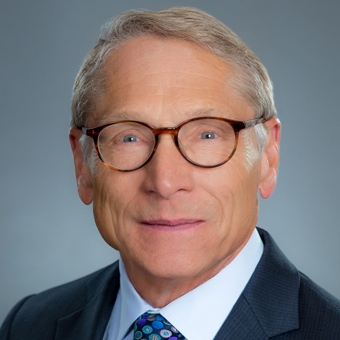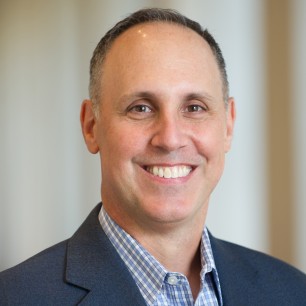Billionaire entrepreneur Elon Musk aims to vastly enhance connectivity and service speeds in some of the most rural areas of the country through a satellite-based service that has raised the hackles of land-based competitors who are questioning his company's promises.
Satellite internet service has often disappointed customers in the past, but the Federal Communications Commission authorized Musk’s SpaceX to build, deploy and operate a system comprising 4,425 satellites for the provision of fixed-satellite service in 2018. SpaceX has committed to connecting 642,925 U.S. locations, including housing units and small businesses, in 35 states.
In October, SpaceX launched a public beta test of its Starlink internet service, and on March 4 launched another 60 satellites into orbit. SpaceX currently has over 1,200 satellites in operation, according to SpaceNews.
In December, the FCC awarded $886 million out of $9.2 billion in funding provided under Phase I of the agency’s Rural Digital Opportunity Fund. RDOF is a two-phased program providing $20.4 billion over 10 years to providers who commit to offering a minimum of 25 megabits per second download and 3 Mbps upload speeds in underserved and unserved areas.
SpaceX's satellite policy director is David Goldman, a former aide to the House Energy and Commerce Committee who previously served as a legal adviser to FCC Commissioner Jessica Rosenworcel, now the agency's interim chair.
Satellite broadband has come a long way in terms of speeds, said Tom Stroup, president of the Satellite Industry Association, which represents roughly 50 members including satellite operators, manufacturers, and launch companies.

Tom Stroup, Satellite Industry Association
He said the industry still has some challenges, especially when it comes to public perception, and some consumers are not aware of the current capabilities of the industry when it comes to offering high-speed internet.
“Many people who have had experience with satellite broadband ten-plus years ago would not know that we currently have 25/3 speeds or even faster,” he said.
A SpaceX spokesman declined to be interviewed about the company's plans, instead offering links to videos about the service.
The company says its speeds will improve as it launches more satellites, installs additional ground stations and improves networking software.
A survey for PCMag found that in October, Starlink offered an average download speed of 79.5 megabits per second and an average upload speed of 13.8 Mbps.
Starlink isn't cheap: Subscribers must pay $499 for equipment and then $99 a month for the service, which is now being used in Ohio, Washington, Virginia, Vermont, and Maine.
In February, NTCA-The Rural Broadband Association and other groups sent a report to the FCC challenging Starlink’s ability to do what it has promised and appealing to the agency to examine funding applications for low-earth orbiting satellite broadband networks.
According to the report, Starlink would face a capacity shortfall by 2028 and that more than 56% of Starlink’s RDOF subscribers would not be fully served.
“Based upon the publicly available information that we had at the time the paper was prepared, it looked to us like they were going to have a challenge in meeting that, at least in certain parts of the country, and if they took on too many customers, perhaps across the country,” said Michael Romano, senior vice president for industry affairs and business development for NTCA-Rural Broadband Association.
Romano said the report is intended to be a means of evaluating satellite broadband technology.

Mike Romano, NTCA-The Rural Broadband Association
“You won’t know if people are going to perform or fail perhaps for four or five or six years, at least. That is why this upfront vetting and due diligence becomes so important,” he said.
Interested in more news on farm programs, trade and rural issues? Sign up for a four-week free trial to Agri-Pulse. You’ll receive our content - absolutely free - during the trial period.
The FCC funding awarded in December is expected to provide service to 5.2 million locations nationwide. Rural electric cooperatives qualified for $1.1 billion in funding to serve some 618,476 locations.
Even as the FCC ramps up its rural broadband funding, Congress is considering an even bigger infusion of spending through an upcoming infrastructure bill, and some lawmakers are pushing the government to require higher service speeds.
Earlier this month, Sens. Angus King, I-Maine, Michael Bennet, D-Colo., Joe Manchin, D-W. Va., and Rob Portman, R-Ohio, sent a letter to Agriculture Secretary Tom Vilsack and other administration officials pushing for a federal broadband standard requiring symmetrical speeds — speeds in the same direction — of 100 Mbps.
Over the next five years, if current trends hold, data needs are expected to increase annually by at least 25% per year, according to the International Data Corporation, the senators argued in their letter.
Ryan Yates, managing director of public policy at the American Farm Bureau Federation, said his organization is supportive of all efforts to get rural Americans connected.
“Coming out of this year through this COVID-19 pandemic, it has been even more apparent where those gaps in broadband connectivity could have a tremendous impact in the rural landscape,” Yates told Agri-Pulse.
Speaking during a Senate Commerce Committee hearing on the progress of broadband connectivity Wednesday, Sen. Jon Tester, D-Mont., said low earth orbiting satellite internet sounds “pretty damn appealing” in rural areas if it works. Former FCC Commissioner Mike O'Reilly, who also spoke during the hearing, said he's used Starlink and was impressed.
"It took three minutes to setup on a rooftop in DC and the service is 150 Mbps instantly," O'Reilly said. While there are still questions about scalability and the business model, O' Reilly said it could fill a need for those who have absolutely no access to broadband.
Yates said newer satellite technology being developed to provide more options for internet access and availability is a positive thing. But he added that there can be a trade-off between cost and service speeds.
“If you have access to broadband, but it is so incredibly expensive that you can’t afford to buy it, then you might as well not have it, so you really have to figure out what that balance is,” he said.
For more news, go to www.Agri-Pulse.com.


